Island vs Mainland Cuisine: A Dialogue of Sea...
From the salt-sprayed islands to the...

© Shutterstock
Don’t know the difference between an Assyrtiko and a Xinomavro, or a Malagouzia and a Moschofilero? Don’t worry, you’re not alone.
Even in Greece, indigenous grape varieties were long overshadowed by their far more famous counterparts from Italy or France – indeed many of them almost went extinct until enterprising local winemakers rediscovered them growing in forgotten corners. But they now form the basis of an industry that is rapidly growing in confidence and sophistication, producing fascinating wines that capture the myriad terroirs of Greece’s diverse landscape, from sun-drenched, windswept islands to cool mountain slopes.
The modern Greek wine industry is in its relative infancy and regions, varietals, and clonal selections are still being researched. Greek wines continue to get better as winemakers learn more about the ideal conditions for each native grape, experiment with new and ancient winemaking techniques, and focus on what makes Greek wine special and unique.
Fighting the challenges posed by the poor reputation developed by the bulk cheap wine of the mid 20th century and difficult-to-pronounce regions and grapes, Greece is also making major efforts to market and promote its new world-class wines. Below are some of the key varieties and their characteristics together with some of the wines you should be drinking now.
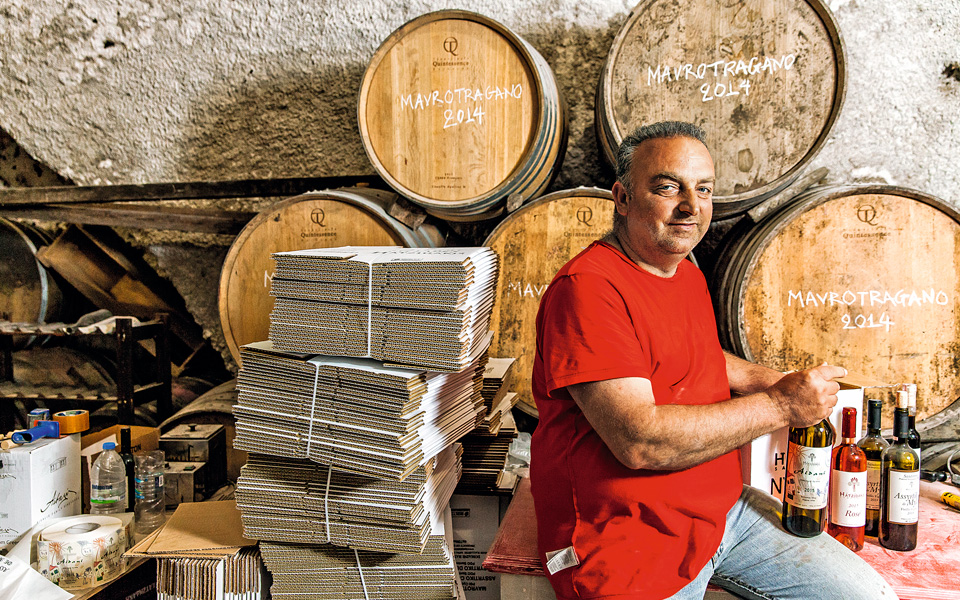
A fan of working with smaller vines, Haridimos Hatzidakis uses indigenous yeasts in the wine making process to highlight the terroir.
© Dimitris Vlaikos
For many, thoughts of Greece invoke visions of the blue domed churches and endless turquoise waters of Santorini where Assyrtiko from the volcanic soil is most famous. While Santorini whites are comparable to the greatest white wines of the world, Assyrtiko from any part of Greece is worth a look. Crisp, refreshing, and very food friendly, Assyrtiko is perfectly paired with anything coming out of the sea, yet strong enough to hold up to meat dishes.
What to drink: Dream of the islands with “Santorini” from Vassaltis Vineyards, “Assyrtiko de Mylos” from Hatzidakis Winery, and Moraitis Estate’s Assyrtiko from Paros.
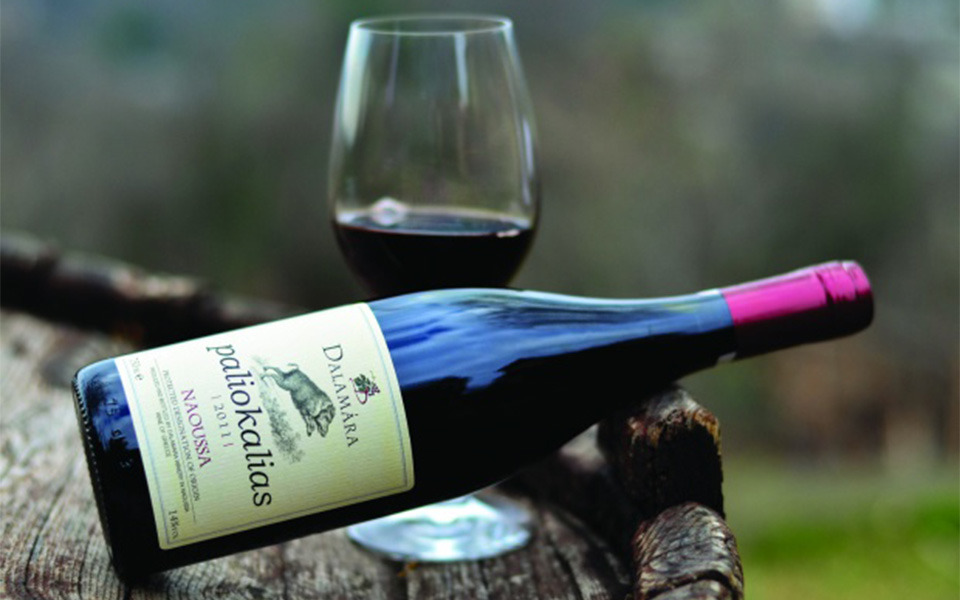
“Paliokalias” from Dalamaras Winery in Naoussa
Xinomavro is an imposing, difficult, and brutal red grape with massive ageing potential that is nothing short of enchanting. The regions of Naoussa, Amyndeon, Goumenissa, and Rapsani each wrangle Xinomavro in their unique way.
Naoussa produces rustic expressions of 100% Xinomavro marked with the sweet smell of ripe tomatoes. Amyndeon offers more polished Xinomavro and very exciting sparkling wines. Goumenissa, with the small addition of the grape Negoska, creates softer, more approachable wines. The Rapsani region blends in Stavroto and Krassato for fuller bodied and spicier wines.
What to drink: Bend a knee to “Paliokalias” from Dalamaras Winery in Naoussa, “Brut Cuvee Speciale” from Domaine Karanika in Amyndeon, “Goumenissa” from Domaine Tatsis, and “Rapsani Old Vines” from Dougos Winery.
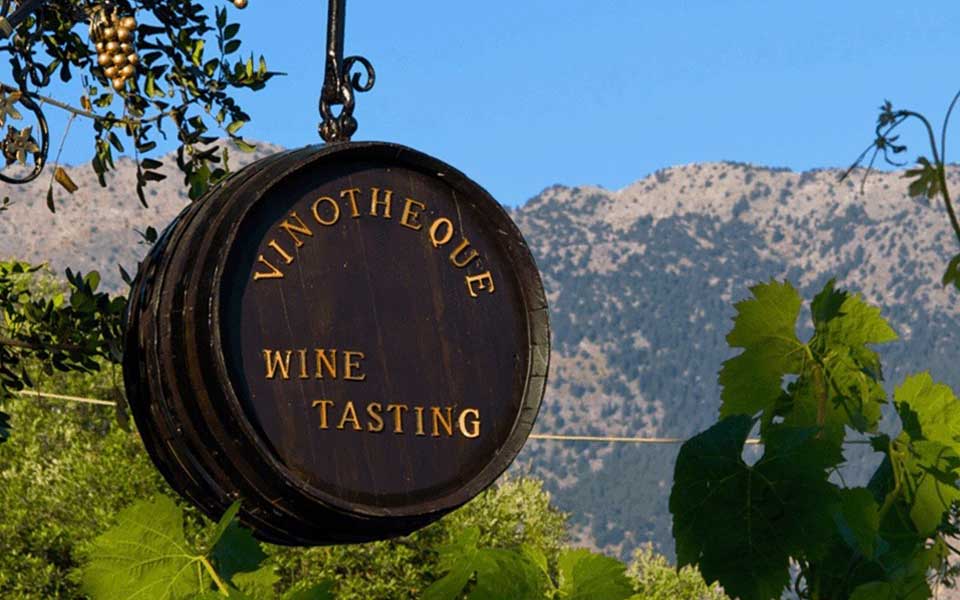
Dourakis Winery
After near extinction, Vidiano has reemerged and stolen the hearts of winemakers and wine lovers alike. Vidiano was an overlooked grape when the trend was to make large quantities of bulk wine instead of focusing on quality.
Vidiano survived because the best farmers knew to keep a few rows of Vidiano in their vineyards to blend in to add beautiful aromatic characteristics to their wine. Winemakers love the adaptability of this white grape which is expressive in youth, powerful when oaked, and intricate when aged. Wine lovers are enamored with the stone fruit and citrus aromas. Sommeliers love the lush and creamy mouthfeel, and its pairing potential with vegetable-based dishes.
What to drink: Fall in love with “Lihnos” from Dourakis Winery, “Vidiano” from Idaia Winery, and “Elia Vidiano” from Karavitakis Winery.

“Tear of the Pine” from Kechris Winery

“Reserve” from Semeli
The spiritual home of Agiorgitiko is Nemea, located in the Peloponesse. Nemea is the setting for many a mythological event; it was here that Hercules slew the Nemean lion, leading to the red grape sometimes being referred to as the blood of the lion or the blood of Hercules.
The grape took the name Agiorgitiko after the village in Nemea, Agios Giorgos, meaning Saint George. To assist with pronunciation some producers have opted to call the grape itself Saint George. There is a style for everyone with this diverse grape from easy drinking young wines to complex and honorable oak-aged reserve wines.
What to drink: Be slain by “Grande Cuvee” from Domaine Skouras, “Apocalypsis” from the Barafakas Estate, and “Reserve” from Semeli.
If there was ever a comeback story in the Greek wine world – it’s retsina. Retsina has been around since antiquity when amphorae were sealed with pine resin which would seep into the wines. However, despite being a staple at every taverna throughout the 20th century, most retsina was cheap and unpalatable, with the resin used to cover serious flaws. Resinated wine as a whole thus developed a poor reputation and fell out of fashion.
But now a new generation of winemakers have sought to revive the style by using quality grapes and quality retsini, the resin from the Aleppo pine tree from which retsina get its name. It turns out, that when retsina is made well, it is an intriguing wine that is perfect with oily seaside fare but can also hold up to roasted meats. The base wine of retsina is mostly Savvatiano but beautiful expressions are being made with Assyrtiko and Roditis as well.
What to drink: Join the retsina revolution with “Tear of the Pine” from Kechris Winery, and the retsinas from Papagiannakos Winery, and Mylonas Winery.
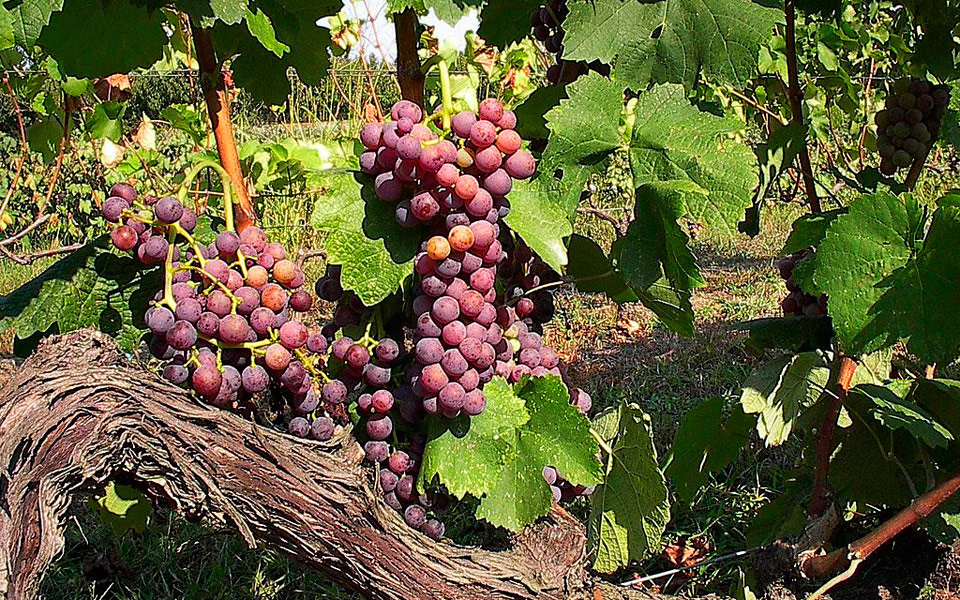
Moschofilero grapes, also known as fileri
Today it’s nearly impossible to imagine the Greek wine landscape without Malagousia but as is the case with many Greek varietals, not too long ago it nearly vanished. Under the watchful eye of winemakers in northern Greece, the aromatic white Malagousia grape was rediscovered and has bloomed into one of the most important varieties in the country. Its tropical and floral aromas can cast a spell on even the most skeptical wine lover. Malagousia’s bright acidity and universal appeal is perfect on any dinner table, matching an array of foods from Asian cuisine to classic Greek roast poultry dishes.
What to drink: Try this bewitching grape from Ktima Gerovassiliou, Oenops Wines, and Zafeirakis Winery.
If aromatic whites are your Achilles heel, then Moschofilero is the sharpest arrow. The high-elevation plateau of Mantineia and surrounding areas in the central Peloponnese are where Moschofilero thrives. This pink-skinned grape is perfumed with orange blossom, gardenias, and apricots. Moschofilero’s hypnotic bouquet demands extra swirls and sniffs. Moschofilero is one of the more recognizable Greek grapes, yet its full potential is far from realized. Interesting orange wines and rosés are starting to make their way into the spotlight.
What to drink: Try a classic expression from Tselepos, “Iereia” rose from Bosinakis Winery, and the orange style “Hoof and Lur” from Troupis Winery.
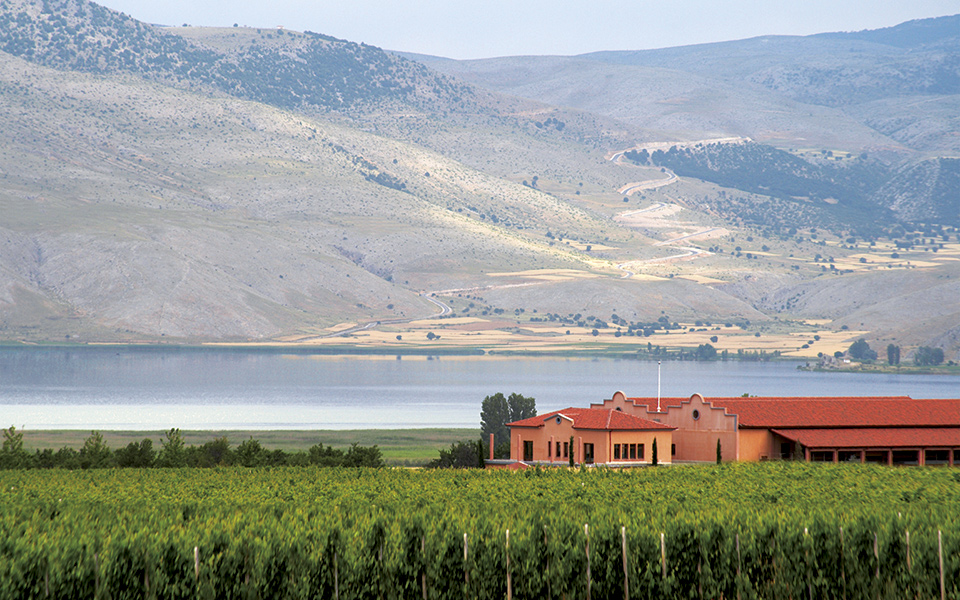
Alpha Estate
“Grape vines do not recognize national borders, they just grow wherever they are comfortable,” says Lucie Morton. While the Greek wine renaissance has been driven by native varietals, let us not ignore that some of Greece’s greatest wines come from international blends.
French and Italian varietals have been planted in Greece’s nourishing soils long before the shift back to indigenous grapes. These old vine wines carry both the spirit of Greece and the nobility of the varietal. Every grape can find a comfortable corner in Greece’s diverse landscape. Syrah is in love with Crete’s sun; the semi-continental climate of Central Greece nurtures Bordeaux blends; and the cold north keeps Sauvignon Blanc crisp.
What to drink: Ease into Greek wine with these familiar grapes: “Nostos Alexandra” from Manousakis Winery made with Syrah, Grenache, and Mourvedre; La Tour Melas made with Merlot and Cabernet Franc; and Alpha Estate’s Sauvignon Blanc.

Greece is home to 80 native wine grapes, each worth discovering. While the following grapes may be more difficult to find, they are worth the hunt. For interesting whites seek out Robola, Kidonitsa, Monemvasia, and Thrapsathiri. To save your palates from fatigue, find reds of Liatiko, Mavrotragano, Vlahiko, Limniona, and Mavroudi.
*Anna Maria Kambourakis is a Certified Sommelier and the owner of Chania Wine Tours. When she isn’t guiding tours of the beautiful wineries and vineyards of Crete, you can find her preaching the gospel of Greek wine on her blog and instagram. Follow along @chaniawinetours.
From the salt-sprayed islands to the...
A hidden gem in Pangrati where...
Explore the story and flavor of...
All the secrets to producing a...